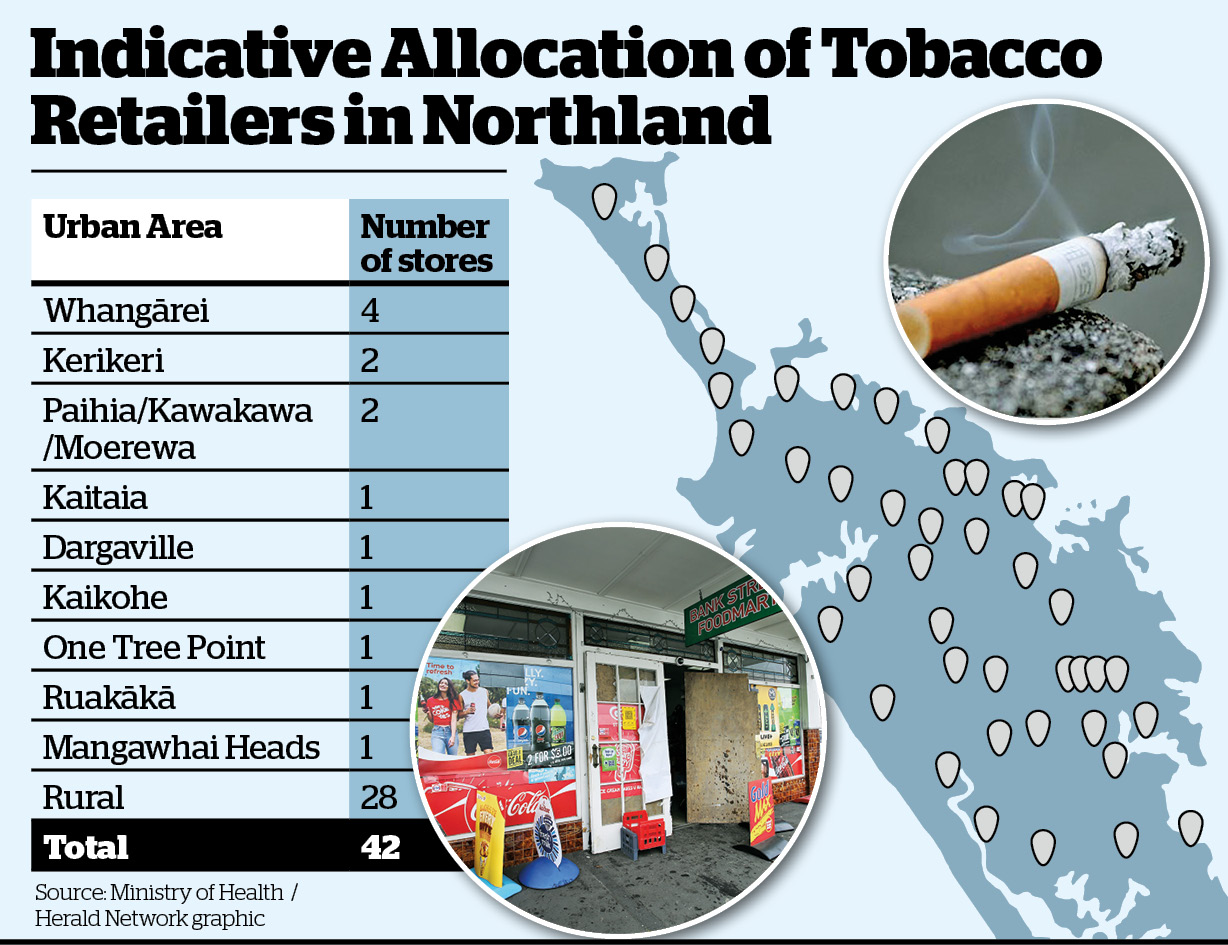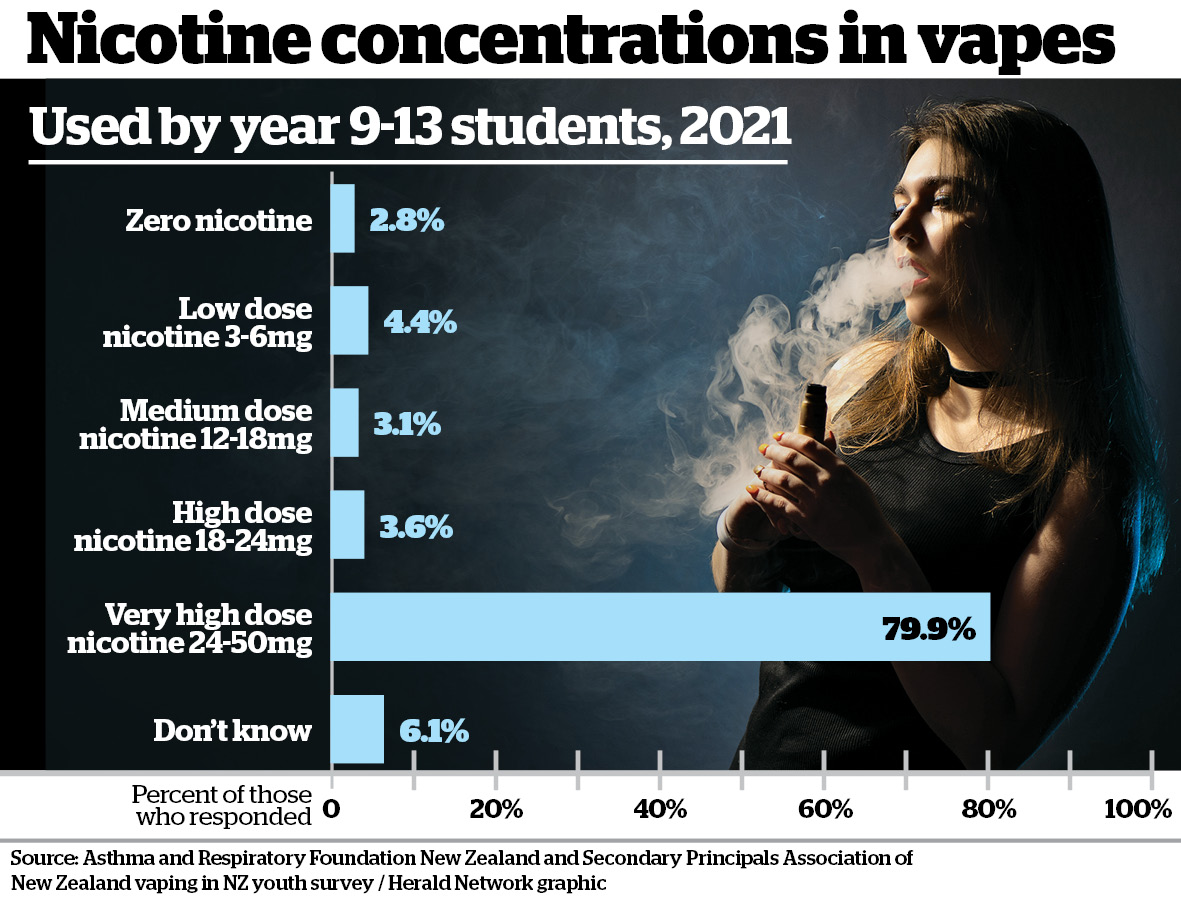Vaping has become an epidemic among young people in Northland. Photo / 123rf
Proposals to limit youth vaping are about striking a balance so Northlanders’ ability to quit smoking is not impacted, experts say.
Concerns have been raised as the Government seeks feedback on measures to
reduce youth vaping, which could limit the sale and supply of vapes.
The proposals are part of changes brought in by the Smokefree Environments and Regulated Products (Smoked Tobacco) Amendment Act, which came into force on January 1.
The Act limits the sale of tobacco products to anyone born on or after January 2009 with an aim to have a smokefree generation by 2025.
There are currently no restrictions upon where vapes are sold in the country, or which shops can sell them.
The new proposals would cap the maximum number of retail premises, and manage their proximity to schools and shops.

Concern has been raised that the proposals will hit those who use vaping to quit smoking.
However, Hayden McRobbie, Regional Director–Northern, National Public Health Service (Te Whatu Ora), is reassuring the public that is not the aim.
Advertisement
“The emergence of vaping products over the last decade or so has changed the possibilities for New Zealanders who smoke. Those not ready to quit have a more cost-effective, less harmful alternative.
“Legislation aims to strike a balance between preventing the uptake of vaping among children and young people and supporting people who smoke to switch to a less harmful product.”
He said the proposals are about creating less appeal of vaping products to rangatahi, and making disposable vapes safer to use.
McRobbie’s comments aligned with those of Associate Health Minister Dr Ayesha Verrell, who placed emphasis on creating less appeal for vaping for youth, while making sure it is still available to those trying to quit.
“Vaping has a role to play in ensuring smokers who wish to quit smoking can do so using vaping products. However, youth vaping rates are too high and we need to strike a better balance,” she said.
The number of young people vaping has more than tripled between 2019 and 2021, a recent study shows.
The issue of youth vaping was further highlighted in a 2021 survey by Asthma and Respiratory Foundation NZ (ARFNZ).
The study revealed a vast majority of the 19,201 students from 283 schools across New Zealand were using high concentrations of nicotine, with many reporting they had never even smoked.
Advertisement

The spotlight has been on youth vaping in recent years even before the proposed legislation.
The Kaipara District Council last year called for more restrictions on vaping in response to having 13 vape outlets in a kilometre stretch of Dargaville.
Furthermore, a Kerikeri high school teacher last year said that vaping was an “epidemic” in her school, with children as young as 12 using vapes.
In a bid to reduce vaping, Whangārei District Council (WDC) was among one of the first councils across New Zealand to adopt the smoke-free 2025 vision, which included vaping.
“No vaping” signage has also been compulsory in schools since 2020, but Tikipunga High School principal and representative for Northland Principals’ Association, Alec Solomon, said vaping is still an issue among the region’s high schools, and he wants to see legislative changes.
“I think there’s been a targeted strategy toward youth, it’s been a very successful marketing campaign,” he said.
“Any student in any school doesn’t need to walk past a shop selling child-centric flavours for vaping, it’s completely unnecessary,” he said.
/cloudfront-ap-southeast-2.images.arcpublishing.com/nzme/3DFZSEQXYZFR3LOHO3LOZV44M4.JPG)
Solomon said each school is trying to find their own solutions, with some treating vaping as a health issue, and others considering it disciplinary.
“But I’d be highly confident to say that every principal wished it wasn’t an issue.”
He said vaping has become mainstream- a considerable step away from its original use as a tool to stop smoking.
The battle against youth vaping was furthered last year, when Te Whatu Ora launched a social and digital media campaign ‘Protect your Breath’.
The campaign was designed by youth for youth, to support them in making decisions about vaping products, and give resources to parents of teens who vape.
McRobbie said funding had been allocated to scale up stop-smoking services.
An additional $8 million of Budget 2021 funding is to be invested directly with Pacific health providers over four years so stop smoking services can be tailored to Pacific communities, who are at greater risk of respiratory-related issues.
The consultation document for the proposed regulations can be found at https://www.health.govt.nz/publication/proposals-smoked-tobacco-regulatory-regime, or you can use the online tool https://consult.health.govt.nz/tobacco-control/proposals-for-the-smoked-tobacco-regulato/.
The closing date for submissions is 5pm, March 15.




